
Code EARLYBIRD applied for 25% off!

Subtotal
$0
U.S. Shipping
FREE
Saved for Later
Shopping Cart

Code EARLYBIRD applied for 25% off!

Subtotal
$0
U.S. Shipping
FREE
Saved for Later
A common question we hear from collectors at The Erin Hanson Gallery is, “How do I light my new painting?” This is a topic close to my heart since I want my collectors to be able to enjoy every nuance of color in their new artwork. Good lighting can make all the difference.
There are a few key factors I want to cover:
Over the years, I’ve noticed how dramatically different my paintings appear under various types of lighting. I finally discovered why some lighting made my paintings look “muddy,” and other lighting made the colors look brilliant and saturated – the way they looked on my easel.
The main difference between a good art bulb and a bad art bulb is the CRI rating–the Color Rendering Index. This number (on a scale from 0 to 100) tells you how well the light bulb displays the true colors of objects as compared to natural sunlight. A bulb with a high CRI (95 or higher) will enhance both the warm and cool tones in your painting or print, eliminating the “muddy” look.
When choosing bulbs for your artwork, ensure they have a CRI rating of 95 or above. Personally, I use Soraa Vivid bulbs in my gallery – they are fantastic and come in a variety of base types to suit different fixtures.
The next aspects to consider are color temperature and light beam spread. I recommend purchasing light bulbs that are between 3600° (warmer) and 4500° (cooler). Color temperature comes down to personal preference and the existing lighting in your home. For instance, if your home primarily features warm lighting (2700°), a very cool art light (5000°) would feel out of place. In my gallery, I use 4500° bulbs, which make the paintings look closest to how they appear in my studio when I’m painting them.
Here are two examples of a cool spotlight in a room lit with cool ambient light:
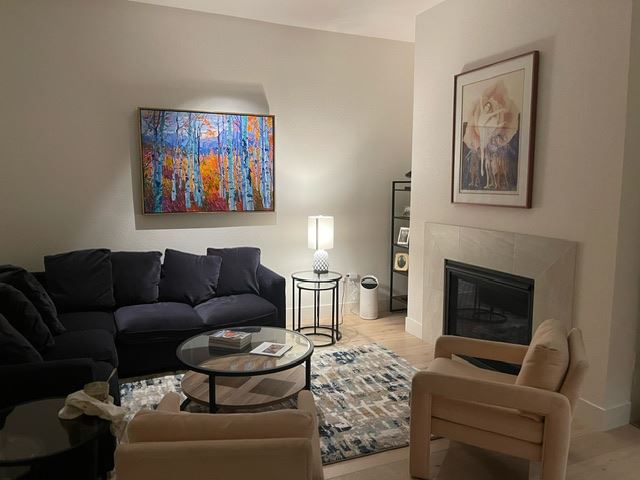
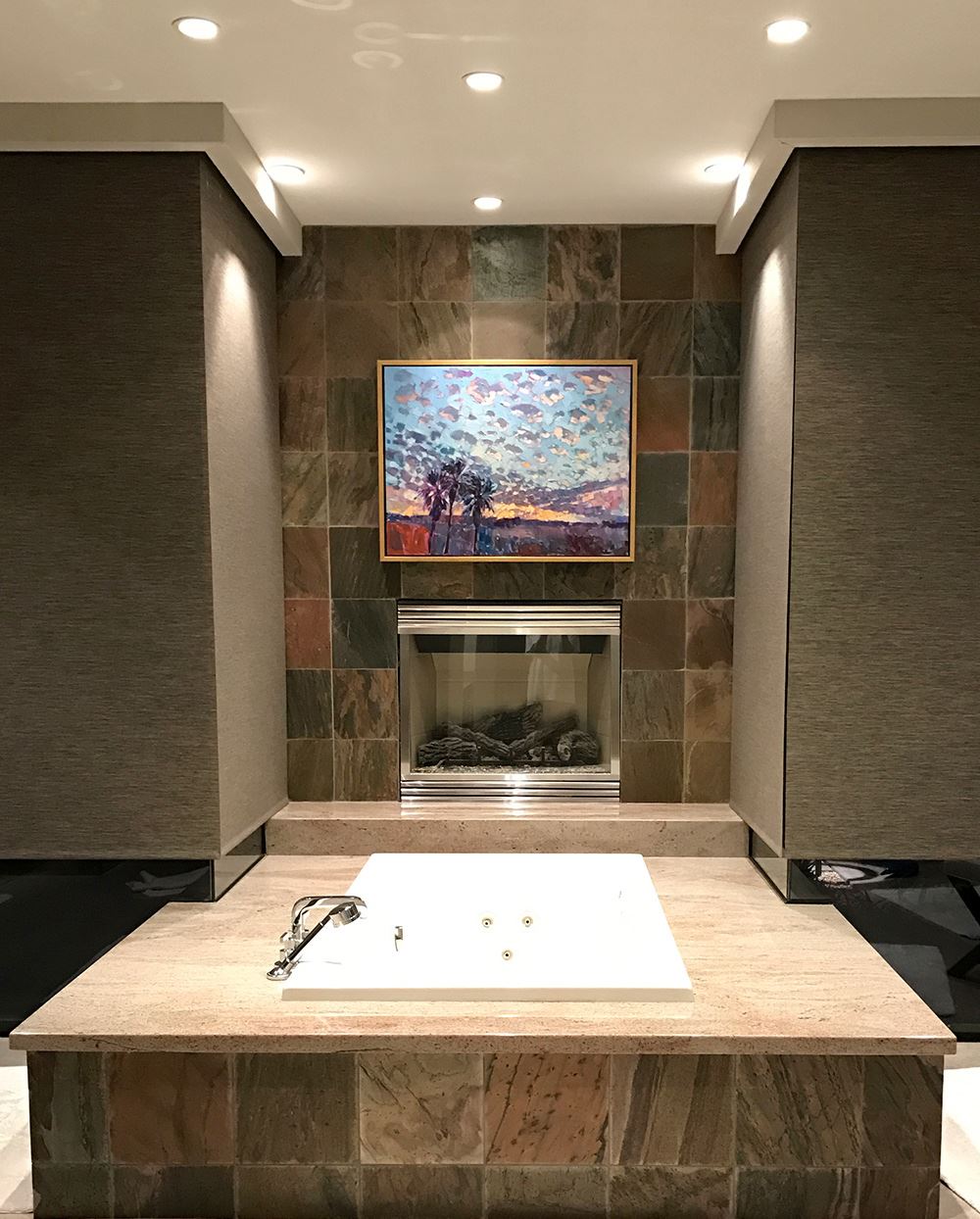
The next decision you must make is what light beam spread to choose.
Large artworks (over 36 inches) will benefit from one or two wide-spread bulbs (36° beam, known as a floodlight). Narrow beams, like 15°, are highly focused and best for highlighting small paintings. Medium beams (around 24°) can emphasize key details in a piece.
I’ll always remember when, many years ago, I was watching a seasoned art gallerist climb a huge ladder to adjust the lighting on a new series of paintings he was hanging. He pointed at a beautiful landscape that featured rays of sunlight piercing through clouds, illuminating a grassy hill. He took the light off the painting, and all the magic disappeared – the painting looked flat, and I could barely see the sunbeams coming through the clouds. He told me he liked to “enhance” the compositions of the paintings in his gallery by applying narrow spotlights to specific parts of the paintings. He put the spotlight back on the painting – Voila! It was like magic how the light transformed it into a completely different painting.
When setting up lighting in your home, consider purchasing a few extra bulbs with different beam spreads. You might discover that a well-placed spotlight can breathe new life into your art.
Now, let’s talk about light fixture placement. You want to enjoy your painting without glare, which occurs when light reflects off the painting’s surface and into your eyes. To prevent this, position the light high above the artwork and about three to four feet away, allowing the light to bounce downward, away from the viewer’s eyes.
The illustration below demonstrates this principle:

If you don’t have ceiling spotlights already, it is surprisingly affordable to have an electrician come out and install several spotlights for you. You could probably get a great bargain by having lights installed on all the walls on which you want to hang artwork. You can even get a dimmer switch to control brightness, which is a wonderful feature. Dimmed spotlights can add atmosphere to a dark room, highlighting your artwork beautifully.
Here are some examples of dimmed spotlights in a dark room:
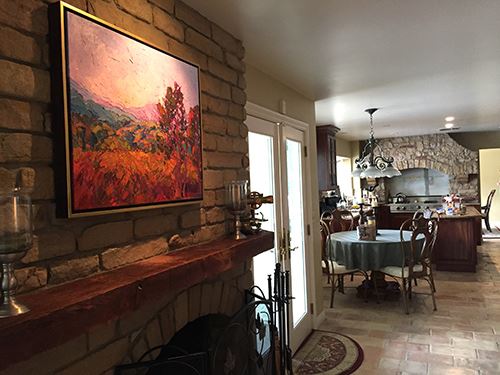
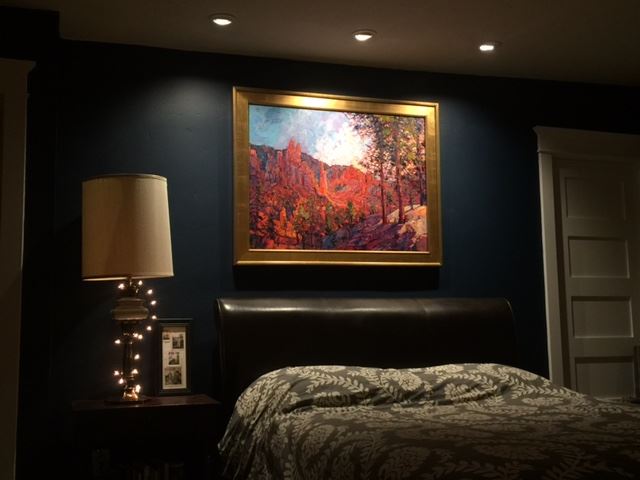
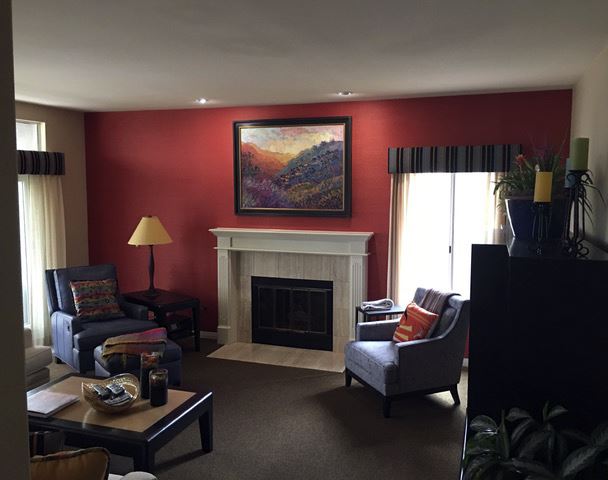
For homes with abundant natural light, a few spotlights are still useful - especially in the evening. Even with great daytime lighting, nighttime illumination can make your art come alive in new ways.
Daytime Lighting:
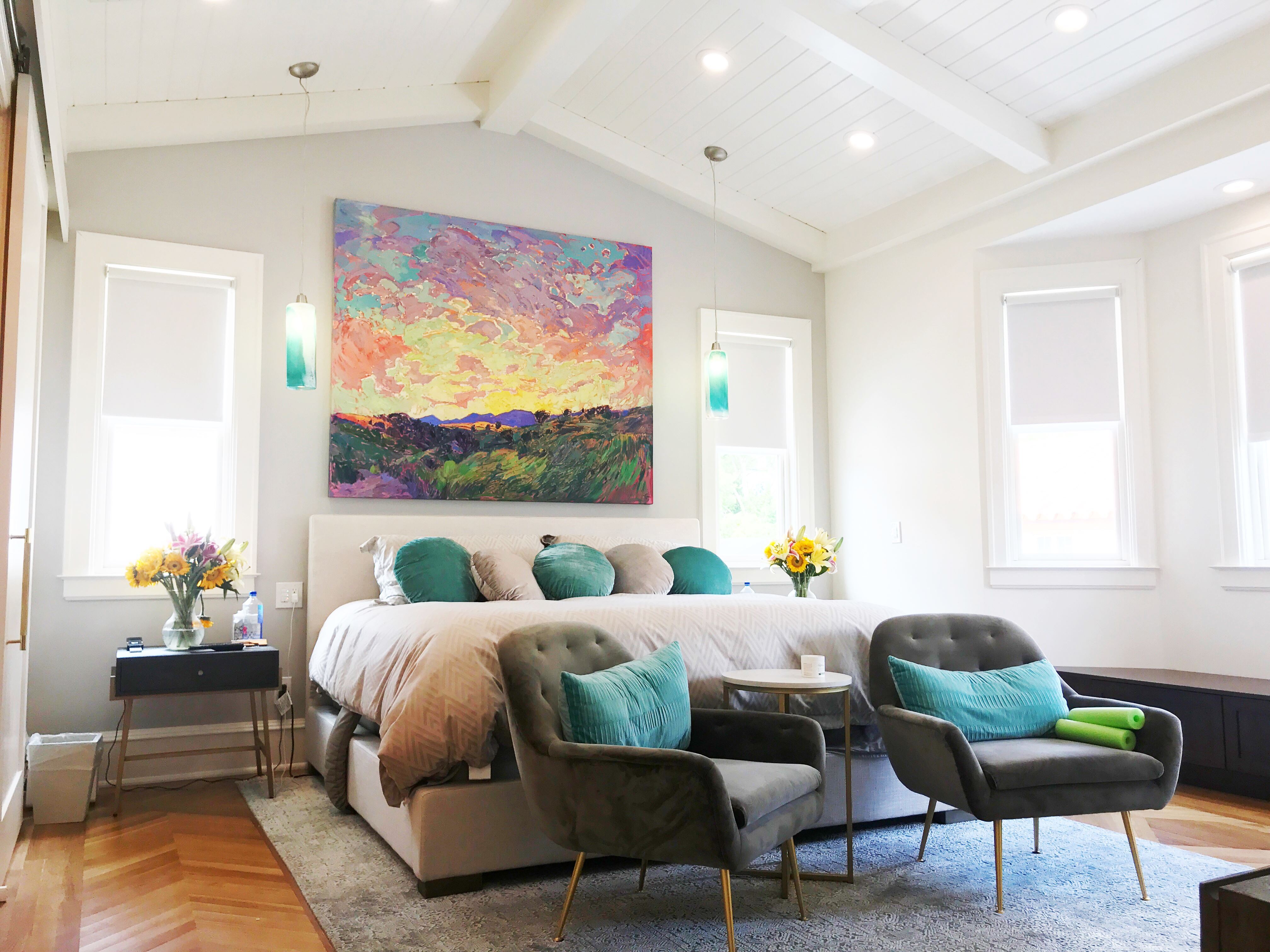
If ceiling spotlights aren’t feasible, wall-mounted art lights are a great option. I recommend Revelite Fine Art Lighting and CocoWeb, but there are many good choices. Just ensure that the light fixture has long enough extension arms to fully illuminate your painting, not just the top portion.
An example of a good wall-mounted light fixture:
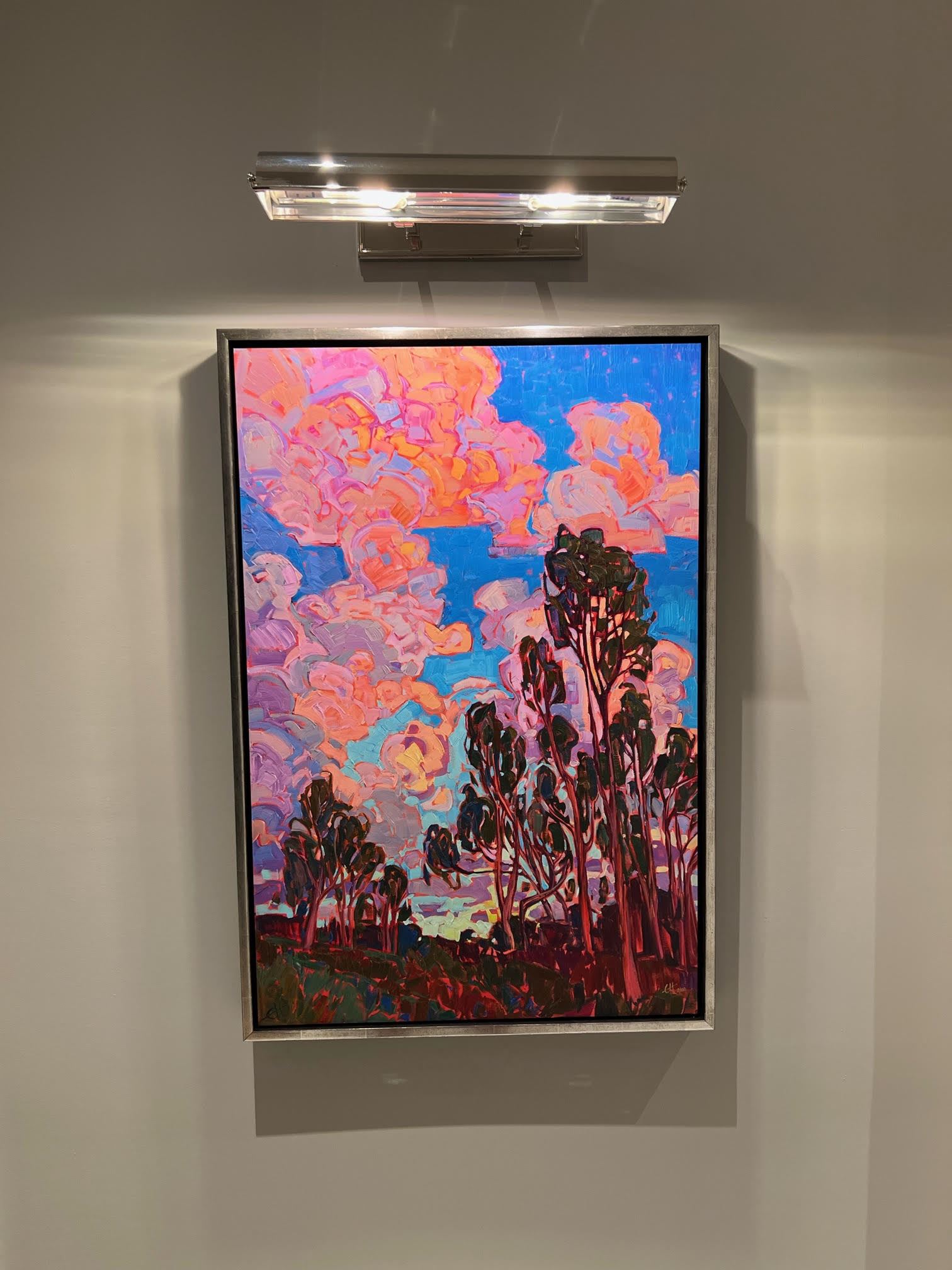
In many homes, lighting is often designed to illuminate only the center area of the room, where people eat, talk, and socialize. The walls are often left unlit, with no built-in spotlights. If this describes your home, consider brightening your artwork with high-CRI Soraa bulbs. You will appreciate the colors in your artwork like never before. With the investment you’ve made to fill your home with art you love, you deserve great lighting that shows off your beautiful collection.
Do you have more questions about lighting? Reach out to The Erin Hanson Gallery and we can help!
Are you looking for art to light up your room? Look through my portfolio, linked here.

About Erin
ERIN HANSON has been painting in oils since she was 8 years old. As a teenager, she apprenticed at a mural studio where she worked on 40-foot-long paintings while selling art commissions on the side. After being told it was too hard to make a living as an artist, she got her degree in Bioengineering from UC Berkeley. Afterward, Erin became a rock climber at Red Rock Canyon, Nevada. Inspired by the colorful scenery she was climbing, she decided to return to her love of painting and create one new painting every week.
She has stuck to that decision, becoming one of the most prolific artists in history, with over 3,000 oil paintings sold to eager collectors. Erin Hanson’s style is known as "Open Impressionism" and is taught in art schools worldwide. With millions of followers, Hanson has become an iconic, driving force in the rebirth of impressionism, inspiring thousands of other artists to pick up the brush.